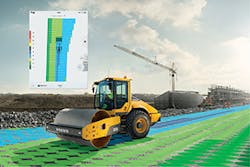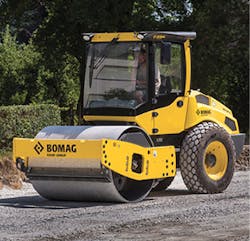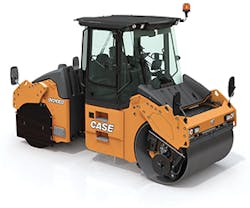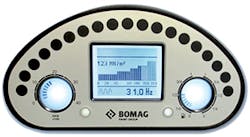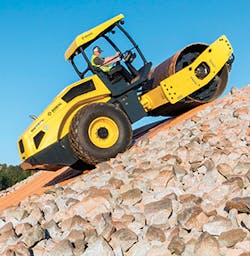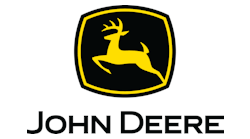Minimizing void content is a primary goal in asphalt compaction. For many in the industry, the tool to do so is not only the machine in which they are sitting but the computer screen in the cab, combining the intelligence and skills of the operator with “intelligent” software.
The result: more precise job performance results with increased labor and cost efficiencies for grading and excavation contracting companies using the software on their construction equipment.
“Innovative compaction measurement systems have allowed companies to deliver a better final product to the customer while improving efficiency,” notes Bert Erdmann, product manager, heavy compaction, BOMAG Americas.
“Rather than completing the prescribed number of passes determined by compacting test strips, these systems deliver real-time feedback of compaction progress, allowing the operator to know when optimum compaction has been reached and preventing over-compaction.”
Different levels of technology are currently available to meet the contractor’s needs and budget, he adds.
“For instance, the recently introduced ECONOMIZER is a relatively low-cost solution that can be added to a single drum roller to help the operator to determine when optimum compaction is achieved,” says Erdmann.
“It requires little training, as the operator simply monitors the number of lights illuminating as soil stiffness increases. The increase in operator efficiency, reduction of necessary passes, and lowering of fuel consumption allows the contractor to quickly realize a return on its investment.”
Ed Brenton, the brand marketing manager for CASE Construction Equipment, notes that “Intelligent Compaction systems have not completely taken over—there are applications and machine sizes where this technology is not as practical—and some operators trust and have faith in their own skill to the point where they don’t need the technology.”
However, many operators do want it for its many benefits. For them, there are three basic types of Intelligent Compaction technologies available in today’s market, notes Brenton.
The first: a basic compaction meter.
“This tells the operator how much rebound there is on the drum so they can adjust as needed,” says Brenton. “If there’s too much rebound, they know the material is well compacted and they can lower vibration. If there’s little to no rebound, there’s still force going into the ground and the area isn’t fully compacted yet.”
The second level of Intelligent Compaction provides the operator recommended operating settings/conditions based on the feedback it gets from real-time conditions of the compacted material, says Brenton.
“This is based on desired stiffness settings, which is preset based on a benchmark pass that’s already met requirements,” he points out. “It lets the operator know within a range of where they should be operating as the compactor travels along. The display screen shows operators the miles per hour they should be traveling in and the level of vibration that should be set. The operator still handles all the adjustments, but the system gives them guidelines of where they should be operating.”
The third level adjusts the vibration of the drums automatically as it goes along, “so the only thing the operator worries about is steering and the speed at which they’re traveling,” says Brenton.
A primary benefit focuses on the immediate feedback of information that lets the operator know if they are reaching desired levels of compaction and achieve those factors sooner, leading to fewer total passes, says Brenton.
“This has three core benefits: the job gets done quicker, there is less wear and tear on the equipment, and it reduces the opportunity for over-compaction, which can lead to the degradation of the lift,” he says.
“This can also mean contractors can keep fewer compactors on a site as they can complete lifts in fewer passes, which might allow them to ultimately keep and own fewer machines. It also helps reduce rework, which means contractors can get on and move to the next lift or task sooner.”
Kevin Garcia, the business area manager for paving and specialty construction in Trimble’s civil engineering and construction division, notes that while there are many types of software on the market to analyze data from the control box on the machine, “there are fewer options for analysis.
“Trimble’s VisionLink is great for dissecting a project even when working with a mixed fleet,” he says. “There also is a tool developed by MnDOT and The Transtec Group called VETA, which is widely used by DOTs and other entities.”
Garcia says “it’s a shame” that Intelligent Compaction systems aren’t implemented on every job.
“The information these systems provide can help ensure a quality road by monitoring consistent roller coverage at the appropriate temperature for achieving optimum compaction,” he points out. “This leads to longer-lasting roads and allows owners and agencies to stretch their maintenance dollars even further.”
Garcia notes that with the introduction of Intelligent Compaction software, many transportation departments are specifying the use of the tools and require the contractor to submit proof of coverage for payment, with continued expansion nationwide. Those departments are listed on www.intelligentcompaction.com.
Brenton points out that Intelligent Compaction provides “excellent benefits in training new talent and improving existing operators.”
Tim Kowalski, an applications support manager for HAMM who works with Intelligent Compaction, agrees, calling compaction software a “great training tool for new operators to help them become more consistent in their pass counts and give better coverages so we get more even compaction on the roadways.”
To help transition operators who have not used compaction software before, Bill Laing, product manager, Volvo Construction equipment, references Volvo’s basic kit for pass count, pass mapping, and temperature.
“This is specifically useful for training new operators who can see how many times they’ve been over a certain area,” he says. “They can quickly get up to speed.”
Garcia concurs. “When it comes to ease of use, this is one of the simplest ‘machine control’ tools to implement,” he says of Intelligent Compaction. “Most operators are proficient in the use of the system within 15 minutes.”
That’s important to note, Garcia points out, because “change can be difficult and the easier we can make the tools, the more likely they are to be adopted.”
“Technologies that effectively monitor soil conditions and relay the information to the operator—whether through an intuitive 1–10 indicator display with ECONOMIZER, the EVIB value with TERRAMETER, or automatic vectoring of the vibrating drum with BVC—give the operator the necessary data to make a decision when optimum compaction has been achieved,” says Erdmann.
“These technologies eliminate wasted passes over the same section where optimum compaction has been achieved,” he adds. “This, in turn, makes the operator more efficient as he or she can move to compaction another area faster, which saves wear and tear on the roller and lowers fuel consumption and costs.”
Compaction monitoring technologies also can allow the operator to detect and address soft spots in the soil where optimum compaction has not yet been achieved, notes Erdmann.
“This eliminates costly call-backs to the contractor to address,” he says. “All three BOMAG technologies are designed to require minimal training for the operator to use so contractors can use operators with a wide range of experience to quickly pick up system operation.”
The use of compaction software has taken traditional compaction methods and the equipment used to do so to a new level.
“Two of the most important things to me are pass mapping and temperature—they are very critical for the compaction process,” says Laing. “It tells the operator how many times it’s been over a certain area and what the temperature is of that asphalt pavement during compaction.
“A contractor can augment that with the compaction measurement value, Density Direct, which gives the actual estimated density of what the pavement surface is going to be after you’ve finished all of that compaction.”
By using compaction software, a contractor can derive efficiencies through improved density and improved productivity, reduction of highway repair costs, continuous record of materials, stiffness values, and estimated density values, notes Laing.
“You can identify weak areas and non-compacted areas and improved depth of compaction,” he adds.
Contractors are still a little reluctant in using Intelligent Compaction to see what kind of benefits they get, but once they start using it, they see more consistency that they’re getting with their passes, the density, and the rideability, notes Kowalski.
“As far as cost savings, a lot of states are looking at coverage percentages, so now when they get the coverage percentages, they’re getting the bonuses as well,” he says.
BOMAG’s BW 177 DH-5 drum roller
Volvo’s compaction software for both asphalt and soil is on an Android tablet as a Google-type application and is used on compaction machines as well as excavators, haulers, and loaders.
New to the market is Volvo’s Compact Assist for Soil, which the company designed to offer real-time guidance to the operator by displaying the number of passes and Compaction Meter Value (CMV), showing operators the exact number of passes across the entire work area as well as whether those areas have reached sufficient compaction.
One of the driving factors for developing Compact Assist for Soil is that many states are developing Intelligent Compaction specifications for soil compaction jobs, notes Laing.
“It takes all the guesswork out of soil compaction, allowing operators at any experience level to save time and money and get the job done right the first time,” notes Laing. “The Volvo Co-Pilot Intelligent Compaction (IC) interface is 10 inches and displays each compactor pass and drum overlap with a unique color, enabling the operator to more easily spot gaps to maintain uniform coverage.”
The operator also can toggle to the CMV screen to see which areas have achieved sufficient compaction and which areas may need another pass. CMV estimates the relative comparison of material stiffness. The drum bounce detection feature alerts the operator when there is over-compacted material.
Data gathered from pass mapping is stored on Volvo Co-Pilot’s internal 14 GB hard drive, designed to provide enough space for up to seven months of data logging. Data also can be backed up wirelessly to the cloud or to a USB drive.
All data is exported in Veta format and can be uploaded at intervals as frequent as 15 minutes or as infrequent as once per week. The software also provides the ability to work with US State Plane Coordinate System (SPCS) as well as Local Coordinate Systems, ensuring all logged job site data is tied to exact locations for future reference. Product alignment files also can be loaded in 2D CAD and displayed on the screen.
Connecting to a free or subscription NRTK network allows over-the-air RTK connection without the need for an RTK base station. All updates to Compact Assist for Soil can be completed over the air.
In addition to Compact Assist for Soil, Co-Pilot also serves as the interface for several previously launched applications, including Dig Assist machine control solution for Volvo excavators and Load Assist load weighing management system for Volvo wheel loaders.
It’s also available on Compact Assist for Asphalt, the Volvo Intelligent Compaction System with Density Direct.
Laing points out that the software displays and stores information regarding the temperature of the asphalt, pass mapping of the asphalt, and the Intelligent Compaction Measurement Value—in Volvo’s case, the estimated density value of what is underneath the drum. It also displays speed and frequency.
CASE DV 210 CD compactor
“It stores the data into Veta, which is where you download the program that you can put the data in,” he says.
Like many other Intelligent Compaction systems, HAMM’s HCQ—HAMM Compaction Quality—measures stiffness value and temperature from an accelerometer.
“It also will map out temperature through temperature sensors both on the front and rear of the machine, so it will measure the hottest temperature at any time so when you’re moving forward to front, the front one will read,” notes Kowalski. “When you go backward, the back one will read. It also does GPS mapping of pass count with a color palette, with the colors chosen as you see fit.”
HCQ bundles all HAMM solutions for compaction measurement and documentation on all HAMM rollers that satisfy the Tier 3 or higher exhaust emission standards.
The HAMM Compaction Meter (HCM) can be used to measure and display rigidity and the HAMM Temperature Meter (HTM) can measure and display the temperature at the asphalt site.
The HCQ Navigator displays the number of passes and the asphalt temperature on a monitor in the roller while compacting.
To reach the aim of giving the ground a specific load-bearing capacity while doing so as evenly as possible over the entire area while conducting earthwork, HCM and the HCQ Navigator are used to monitor the load-bearing capacity during compaction.
The HCQ Navigator is a satellite-based system for the collection and display of all essential compaction parameters and the compaction progress of one or several rollers.
The system can be employed for both earthwork and asphalt compaction.
During compaction, the HCQ Navigator produces a real-time compaction map of the area worked displayed on a panel PC in the cabin that includes a USB port. Drivers can view areas which have already been adequately compacted and those requiring further compaction.
The HCQ Navigator determines the roller’s position with the aid of the HCQ satellite receiver fitted to the roof of the roller while a variety of data relating to the compaction process—such as the number of passes, rigidity, temperature, driving speed, compaction frequency and amplitude, machine position—is simultaneously measured.
The HCQ Navigator combines the measurement values with the positional data to generate various views such as the number of passes or the surface temperature. All data is stored on the panel PC and made available for analysis and documentation. Drop-down menus provide ease of use, notes Kowalski.
When a number of rollers work in a group, data from all rollers is exchanged among them via the WLAN, enabling the driver and construction management to see the compaction progress of the entire team on the monitor.
One of the many features is a replay function, showing the compaction process in fast-forward, offering an operation the ability to analyze processes and optimize rolling patterns, for example.
Weak points can be identified during proof rolling as the roller is driven over the prepared roadbed before beginning the asphalt work and the pass is recorded with the HCQ Navigator. An evaluation of the data will then reveal the existence of any weak points in the roadbed in question.
The panel PC and the HCQ satellite receiver can be exchanged between the HAMM rollers and the construction sites.
A split screen enables drivers to simultaneously view two information outputs such as pass count and temperature or pass count and stiffness, notes Kowalski.
“Also, it can communicate with more than one roller at any time. It uses the OmniSTAR subscription system to where you don’t need a land base and you can travel further distances without losing connection. The accuracy of that is about two to four inches,” he says.
The HCM sensor measures the vertical acceleration of the drum. A processor then determines the HMV value from the measurement signals.
The HCM measures and displays the subsoil rigidity during compaction by means of a sensor on the drum during dynamic compaction, and displayed on the dashboard as an HMV value.
The information on the current level of compaction achieved can be used by the driver to ascertain whether the ground requires further compaction or if there is a weak point.
The HCM can be used on all rollers that compact dynamically using vibration.
The HAMM Temperature Meter, which shows the current asphalt surface temperature from an infrared temperature sensor measuring the asphalt surface temperature, displays results on the dashboard to enable the driver to decide whether and how—statically or dynamically—where and how the asphalt needs to be compacted. The rollers can be equipped with one or two asphalt temperature sensors, depending on the machine type.
The HTM can be used on all tandem and pneumatic tire rollers.
The HAMM HCQ software was expected to be updated in January 2018, offering the capabilities of being able to upload the software and data via the cloud and view information in real time from any location—office computer, tablet, or on a phone.
BOMAG offers three compaction monitoring devices for soil compaction. The BOMAG ECONOMIZER uses an accelerator to measure soil stiffness and an intuitive 1–10 indicator light progression to offer real-time compaction results.
As compaction increases, more lights on the 1–10 scale illuminate. When the number of lights stops increasing, the maximum level of soil stiffness has been achieved, indicating it is time to move to another section.
Climbing in BOMAG’s new BW 211DH
The BOMAG ECONOMIZER was recently expanded to BOMAG single drum rollers.
The BOMAG TERRAMETER uses two accelerators for continuous dynamic compaction control. TERRAMETER determines the dynamic soil stiffness and shows the operator the EVIB value on a display which directly correlates to soil stiffness. It indicates when no further compaction is possible and locates and documents soft spots and non-uniform areas.
The BOMAG VARIOCONTROL automatically measures soil stiffness multiple times per second to optimize compaction forces in response to current soil conditions. Compaction energy is adjusted by a specially designed exciter system which changes the direction of the vibrating drum from true vertical for maximum depth penetration to purely horizontal as stiffness increases.
Trimble’s software is designed to show “green” when the operator has achieved the appropriate coverage, signaling it is time to move on.
The software also is designed with “easy-to-read temperature alarms for asphalt that is too hot or too cold,” notes Garcia, adding that it eliminates guesswork in an operator wasting time making additional passes that aren’t helping achieve density “and in fact may be detrimental to the placed mat when over-compacted.”
Additionally, the software tool has the potential to increase efficiency for the contractor, Garcia says.
In a study Trimble conducted in Colorado, one operator was able to cover 60,000 additional square feet of road in three fewer hours when using the system, deriving a 24% increase in productivity.
“The real benefit came when the paver was able to maintain his production instead of stopping to wait for the roller train,” says Garcia. “When the paver stops, you have a high number of people doing nothing and you introduce bumps in the freshly-paved road. Eliminating both of those things is a big win for the contractor.”
Wacker Neuson’s Compatec system is available on larger vibratory plates and trench rollers, including the RTx trench roller.
“Those who only work occasionally with vibratory plates and trench rollers sometimes have difficulty assessing when the soil is well-compacted,” says Vince Hunt, product manager, compaction and concrete. “Compatec is the ideal feature for avoiding under-compaction as well as unnecessary passes, which often results in over-compaction of the soil.
“Compatec allows for the reliable determination of the relative compaction progress. The display is easy to understand and located in the operator’s line of sight. Eight LED lights indicate to the operator the relative compaction progress. Flashing lights give feedback to the operator when over-compaction has occurred and alerts the operator of possible machine damage.”
A sensor located near the drums measures the vibration level and determines how much the soil has been compacted.
The system is ideal for less experienced operators and helps avoid unnecessary passes, notes Hunt.
The display is located on the back of the RTx trench roller where the operator can see the highly visible LEDs. The brightness automatically adjusts to the environment, including bright sun.
Wacker Neuson’s RTxSC3 (Smart Control 3) is operated with a line-of-sight infrared remote control. The control technology is designed to eliminate blind spots should the unit move behind obstacles and other obstructions or should the operator get distracted.
Additionally, the machine will stop moving and vibrating if the operator comes within three feet of the roller’s sensing eyes or releases the controller’s joysticks.
Other additions to Wacker Neuson’s trench roller series include a third receiving eye on top of the unit to ensure continued smoother operation along the trench without interruption as it travels under shoring cross bars.
Angela Ellingwood, marketing operations director for Weber MT, says that the company provides active engine protection through MDM (Motordaten Management) for hand-guided soil compactors. It is a standard feature offered for reversible plate compactors of the CR 6 to CR 9 series, which complements the newly refined COMPATROL 2.0 compaction control system. It is designed for improved operational safety, greater efficiency, and a longer service life.
To increase operational safety day to day at the construction site, Weber MT relies on a comprehensive engine data management system, offering vibratory plates with built-in engine protection.
MDM engine protection constantly checks all essential parameters of the engine—the Hatz diesel engine will shut off automatically if the MDM discovers that the engine oil pressure/oil level is too low, the engine temperature is too high, or the air filter is full.
An LED indicator notifies the operator. A display indicates when the battery is not charging. An LED light comes on 10 operating hours prior to next service check (and at 150 operating hours for the first time). Operating hours are shown after the machine starts.
Additionally, the hour meter is standard, the machine shuts off with an ignition switch, service check times are reset with a magnet, and the MDM module and ignition switch can be taken out and replaced.
COMPATROL 2.0 is designed to enable uniform compaction across the entire compacted surface, detecting weak spots and ensuring a smaller number of passes for an estimated time and cost savings of up to 25%.
COMPATROL 2.0 is available for CR 6 through CR 9 reversible compactors. These machines also are available with just the MDM Engine Protection.
WEtrac—the engine protection machine with data telematics from Weber MT—is offered for new machines with MDM and COMPATROL 2.0. The system in the machines comes factory installed.
All display modes that are recognized and displayed by the MDM engine protection are sent to the customer via GPRS/GSM. The current location of the machine is detected through GPS signal.
Information about the machine, such as operating hours, voltage of the battery, cleanliness of the air filter, and location are available without the machine in sight. The system also provides information about upcoming maintenance, enabling better planning for the workshop.
Display of the MDM engine protection is transmitted, offering additional transparency regarding the current situation of the machine.
An anti-theft feature transmits the machine’s location and path and reports if the machine leaves a certain area or is moved out of defined times. The system can be configured to the operator’s own needs.